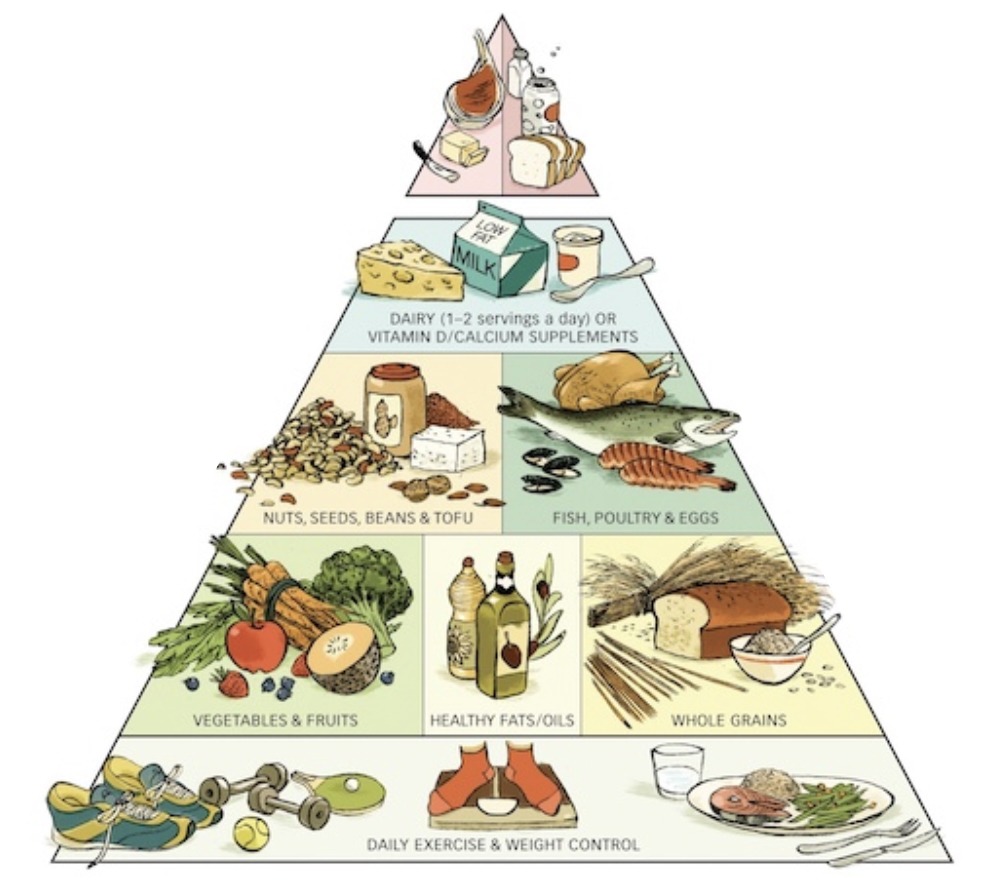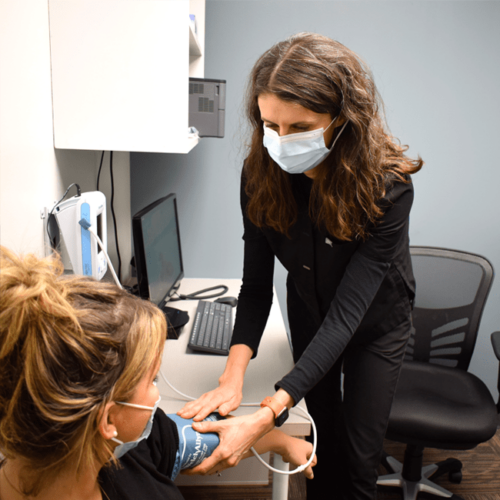Empowering the Citizen Patient

Article #9
Healthy People, Healthy Communities –
Learning About Your Health Conditions
As we journey through life, maintaining good health becomes increasingly challenging, especially as we reach our middle years. In this ninth installment of the ‘Empowering the Citizen Patient’ series, Dr. Mindy Smith uses the examples of hypertension and diabetes to explore how understanding your health conditions can empower you to take control of your well-being, manage your symptoms effectively, and live a full and vibrant life.
Even though we try to stay healthy, many of us will get a chronic health condition like high blood pressure in our 40s and 50s. By age 65, over 90% of us have at least one chronic illness. Things like a poor diet, not enough exercise, too much alcohol, smoking, stress, and genetic factors increase our risk. But the good news is that learning about our health conditions and taking action can make a big difference. We can still live full, vibrant lives!
Learn About Your Health Conditions
Learning about your health condition(s) is an important first step! Talk with health care providers, if you can, including local pharmacists and check out this website to learn more about how you can support your own health: https://www.selfmanagementbc.ca/.

It’s also important to keep an easily accessible list of your medications, what they do for you, and possible side effects. Read about your condition on reliable sites like Canada Public Health Services, HealthLink BC, and specific disease association sites like Heart and Stroke Canada. Interior Health also offers information and links to local and virtual education programs and supports, including how to manage medications. Remember that all internet sources are not reputable. Your local library is another valuable resource.
Have a Plan
Having a plan for managing your health condition(s) is crucial. This can include step-by-step changes to improve your diet, health habits, and activities. Your plan should also include:
- Which symptoms to watch for to know when to seek help (e.g., chest pain with exercise)
- Measures you can take if you are having trouble (e.g., blood pressure going up)
- Where to call if you need advice (e.g., HealthLink BC by dialing 8-1-1)
Action plans are available online for conditions like asthma, chronic pain, and for those with mental health concerns. Guidance for action and crisis planning can be found at sites like this one at healthy place.com.

Things That Help
Things considered helpful for most chronic health conditions include eating healthy food, getting daily exercise, and adequate sleep. You could consider meeting with a dietitian for support, available through some clinics or through
calling 8-1-1.
Image Copyright © 2008, Harvard T.H. Chan School of Public Health
Managing Specific Conditions
Hypertension (High Blood Pressure)
Hypertension is persistent blood pressure (BP) of more than 140/90 mmHg. Check your BP at your practitioner’s office or with a home BP monitor; many pharmacies have BP machines that you can use anytime. BP normally goes up and down but should not stay high. We know that high BP strains your heart and can lead to heart attacks or strokes. Here are a few tips to lower your BP:
- Limit salt in your diet
- Exercise daily (e.g., walking); heavy exertion/sweat is not needed to be effective
- Reduce stress through mindfulness, meditation, or counseling
- Follow a heart-healthy diet like DASH
- If overweight, reduce weight by 5-10 pounds

If you are on medication, take it as prescribed or consult your healthcare provider or pharmacist for adjustments that you may need for too high or too low BP. Check your BP regularly and keep track of it. Seek help for very high BP (180/120 mmHg or higher) with symptoms like chest pain, shortness of breath, numbness or weakness, vision changes, difficulty speaking, or severe headache.
Diabetes
Diabetes is a condition in which the pancreas does not make enough insulin or sometimes the body becomes resistant to insulin leading to high blood sugar. High blood sugar can make you feel tired or confused, and can damage your eyes, kidneys, and heart. Symptoms to watch for are excessive thirst, urinating more often, blurry vision, unexpected weight loss, skin sores that heal slowly, or feeling tired and weak.
A few tips to help manage diabetes:
- Eat regular, plant-based meals; if overweight, even a 5 pound loss helps. Proper foods are not easy to get for some of us and these links may help when eating on a budget (Food Insecurity and Diabetes and Diabetic Friendly Hamper Food)
- Exercise most days
- Take your medications if prescribed
- Check your feet for sores and have your eyes checked yearly
Controlling BP to less than 130/80 mmHg and lowering cholesterol are very important for staying healthy. For those with type II diabetes, your clinician should check your blood sugar (A1C test <7-8) every 3-6 months and you should track it so you know when you need better control. You can check your own BS by finger stick if you feel unwell. Seek help for any non-healing skin sores and urgent help for high (above) or low blood sugar symptoms (e.g., dizzy, anxious, sweating, weak, confused).
This article covers two relatively common health conditions. Visit our Kootenay Boundary Patient Advisory Committee and Community (https://kbpacc.ca/) for a table of conditions including the cause of the condition, what you can do to care for yourself and what you might need if the condition worsens.
By taking proactive steps and staying informed, we can better manage our health conditions and lead healthier lives.
Click/Tap the LIKE button to share via email, instagram, Facebook and More!
We would love to hear from you!
What did you think of this article? What could we do better? Any suggestions for other articles that would be helpful? Please complete our short survey here!
Common Health Conditions
This table includes other common health conditions with tips about the condition, what you can do to monitor or improve the condition and types of care that you may need from your health care provider, health care team (e.g., nurse, social worker, physical therapist, chiropractor, specialist clinician) family or friends and when. The more that you know about your health condition and how to best manage it, the better you will feel. You are the person who knows yourself best. By keeping track of your symptoms and test numbers, you can see for yourself how you are doing and when you might need some help.
| Health Condition (% in general Canadian population) | What it is | What I can do | What I might need |
|
Asthma (10.7%) |
Inflammation of the airways with spasm of the beathing tubes | Avoid your triggers (e.g., smoke, pollen), use your inhalers, monitor peak flow |
Breathing testing Allergy testing Emergency help for a bad attack |
|
Cancer (40% will have a cancer diagnosis in their lifetime; some can be cured and many can be controlled) For screening see: KBScreen.ca, call 1-800-663-9203 for mammograms, call 1-877-702-6566 for cervical cancer screening or online at http://www.screeningbc.ca/cervix |
A disease in which some cells in the body grow uncontrollably and can spread to other parts of the body. Lung, breast, and colorectal cancers are most common | Avoid smoking and cancer-causing chemicals, protect your skin from sun, get vaccinated for HPV. Test home for radon. Stay active and eat healthy foods. Manage stress.1Follow your treatment and monitoring plan |
Support Blood testing or imaging Specific treatment(s) Seek urgent or emergency care if you can’t control symptoms like severe pain, nausea, or shortness of breath or have a fever during treatment |
|
Chronic Obstructive Pulmonary Disease (emphysema, 9.5%) |
A lung disorder with progressive airflow limitation | Don’t smoke, wear a mask or stay indoors if bad air quality, do breathing exercises, use inhalers, monitor symptoms2 |
Chest x-ray if symptoms worsen Antibiotics for acute attack if your sputum is not clear/usual color Emergency help for a bad attack |
|
Diabetes (8.9%) |
The pancreas does not make enough insulin leading to high blood sugar or the body becomes resistant to insulin | Eat regular plant-based meals and exercise most days to control blood pressure (<130/80 mm Hg), blood sugar (A1c<7 to 8) and cholesterol (LDL<2.6 mmol/L); take your medications, check your feet for sores, and have your eyes checked yearly | Check your blood sugar if you are sick or having symptoms. Seek urgent help if you have a skin sore (ulcer) that is not healing. Seek urgent/emergency help for symptoms of high and low blood sugar or persistent high or low blood sugar numbers3 |
|
Heart Disease (also called Coronary Artery Disease, 5%) https://www.interiorhealth.ca/health-and-wellness/heart-health |
A heart disorder caused by narrow or blocked blood supply to the heart | Don’t smoke, use diet and exercise to keep your blood pressure, cholesterol, and blood sugar controlled (see above); take your medication and daily low-dose aspirin (~81 mg) unless taking a blood thinner |
Electrocardiogram or stress test4 Nitroglycerin for heart pain (angina); seek emergency help for angina that is severe or doesn’t stop quickly Procedure to improve blood flow to the heart5 |
|
Heart Failure (also called Congestive Heart Failure, 1.5%) https://www.interiorhealth.ca/health-and-wellness/heart-health |
A heart disorder that occurs when your heart can’t pump enough blood for your body’s needs | Limit salt and extra fluids in your diet, weigh yourself daily and report if increased by more than 3-5 pounds, take your medication and monitor your symptoms6 | Blood or heart testing (BNP, echocardiogram); seek emergency help if you have chest pain, faintness, or sudden, severe shortness of breath and coughing up foamy mucus |
|
Hypertension (high blood pressure [BP] or >140/90 mm Hg, 22.6%) |
High BP puts strain on the heart and, over time, can cause a heart attack or stroke | Limit salt in your diet, follow a good diet (DASH) and exercise program; check your BP regularly and take your medication, if prescribed | Talk to a health provider if your blood pressure is high about medication changes; seek emergency help for very high BP and symptoms7 |
|
Mood disorders like anxiety or depression (11.6%) |
A mental health condition that primarily affects your emotional state; these are more common in people with other chronic diseases |
Identify this as a health problem, not a personal failing, and monitor your symptoms8 Talk to others, get daily exercise and try relaxation techniques and mindfulness; find counseling9 and take your medication, if prescribed |
Professional counseling,9 Seek emergency help if you are feeling like killing yourself by calling 1-800-SUICIDE (784-2433) or 310-6789 or go to your nearest emergency room; also go to the emergency room if you are experiencing hallucinations or delusions |
|
Osteoarthritis (13.6%) https://arthritis.ca/about-arthritis Although there are many types of arthritis, this is the most common |
A progressive joint disease most commonly affecting the hands, feet, hips, knees, and spine | Exercise (stretching and strengthening), especially the affected joints; reduce excess weight; try ice massage, and daily acetaminophen or non-steroidal anti-inflammatory medication for pain |
Physical therapy Assistive device (cane, brace, walker) Injection therapies Prescription medication Joint replacement |
Abbreviation: BNP, beta natriuretic peptide; HPV, human papilloma virus; LDL, low-density lipid
- Stress management can include relaxation exercises (https://www.healthlinkbc.ca/health-topics/stress-relief-and-relaxation), activities that make you feel happy, talking with others and counselling.
- Consider using the COPD Assessment Test for monitoring symptoms (https://www.catestonline.org)
- High blood sugar: very thirsty and frequent peeing, blurred vision, very tired; Low blood sugar: fast heartbeat, shaky, sweaty. If your measured blood sugar number is high (above 300 mg/dL or 16.7 mmol/L) or stays low (below 70 mg/dL or 3.9 mmol/L) or falls to 54 mg/dL or 3 mmol/L or lower get immediate help.
- Measures the electric pulses of the heart at rest or with exercise (stress test) to look for changes showing heart strain or damage to the heart muscles
- Procedures to increase blood supply to the heart include stents and coronary artery bypass surgery
- Heart failure symptoms include rapid weight gain, swelling in legs or feet, irregular heartbeat, being tired and not able to exercise
- BP 180/120 mm Hg or higher AND any of the following: chest pain, shortness of breath, numbness or weakness, change in vision, difficult speaking, severe headache
- For anxiety, you can use the GAD 7 (https://adaa.org/sites/default/files/GAD-7_Anxiety-updated_0.pdf) and for depression, you can use the PHQ9 (https://www2.gov.bc.ca/assets/gov/health/practitioner-pro/bc-guidelines/depression_patient_health_questionnaire.pdf)
- Counseling options include in-person (trail FAIR Society, https://www.trailfair.ca), telephone (811) and online services like Bouceback (https://bouncebackbc.ca), MindHealth BC (http://www.mindhealthbc.ca), or Heads Up Guys (https://headsupguys.org)

Get the articles direct to your inbox!

